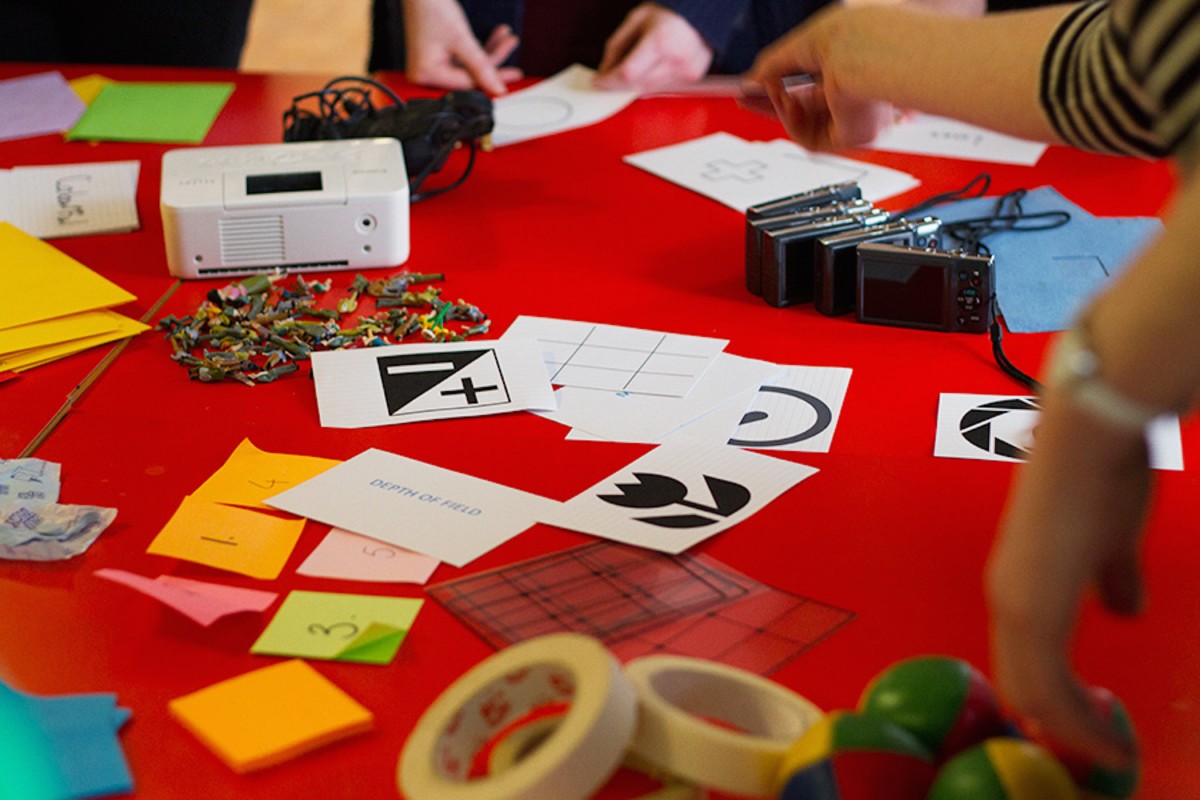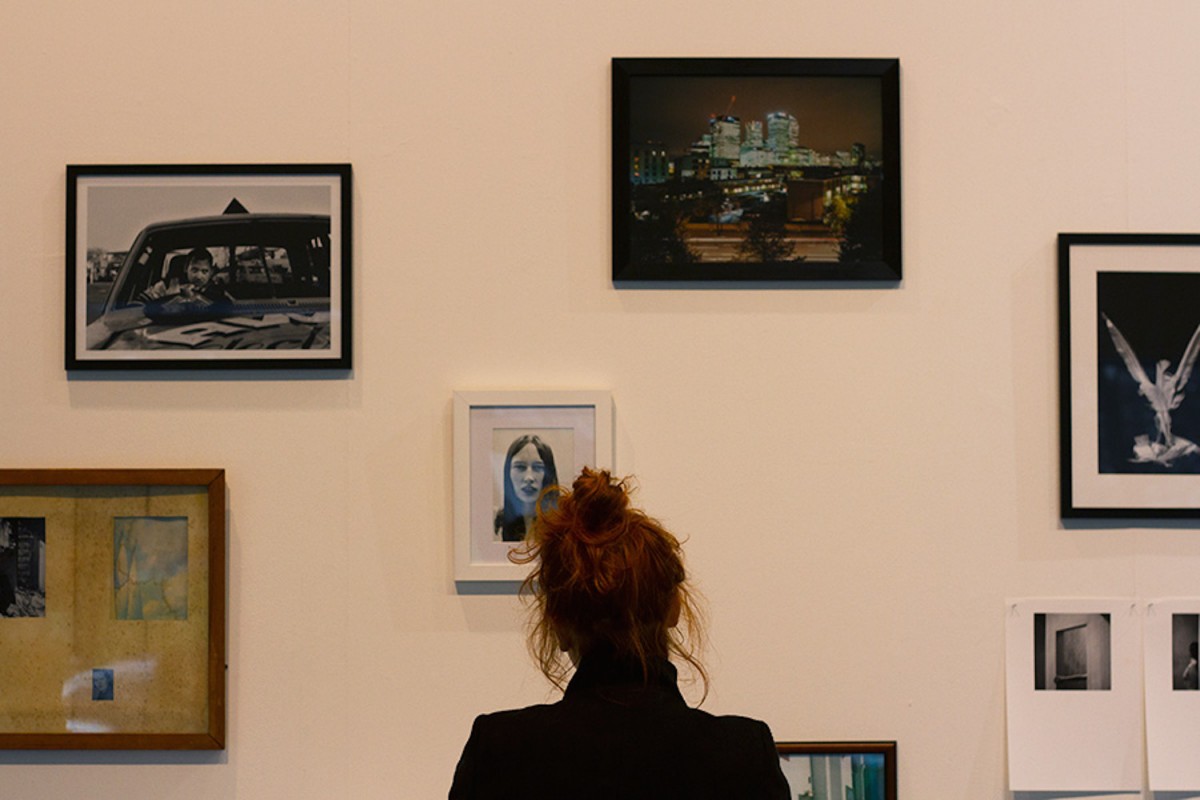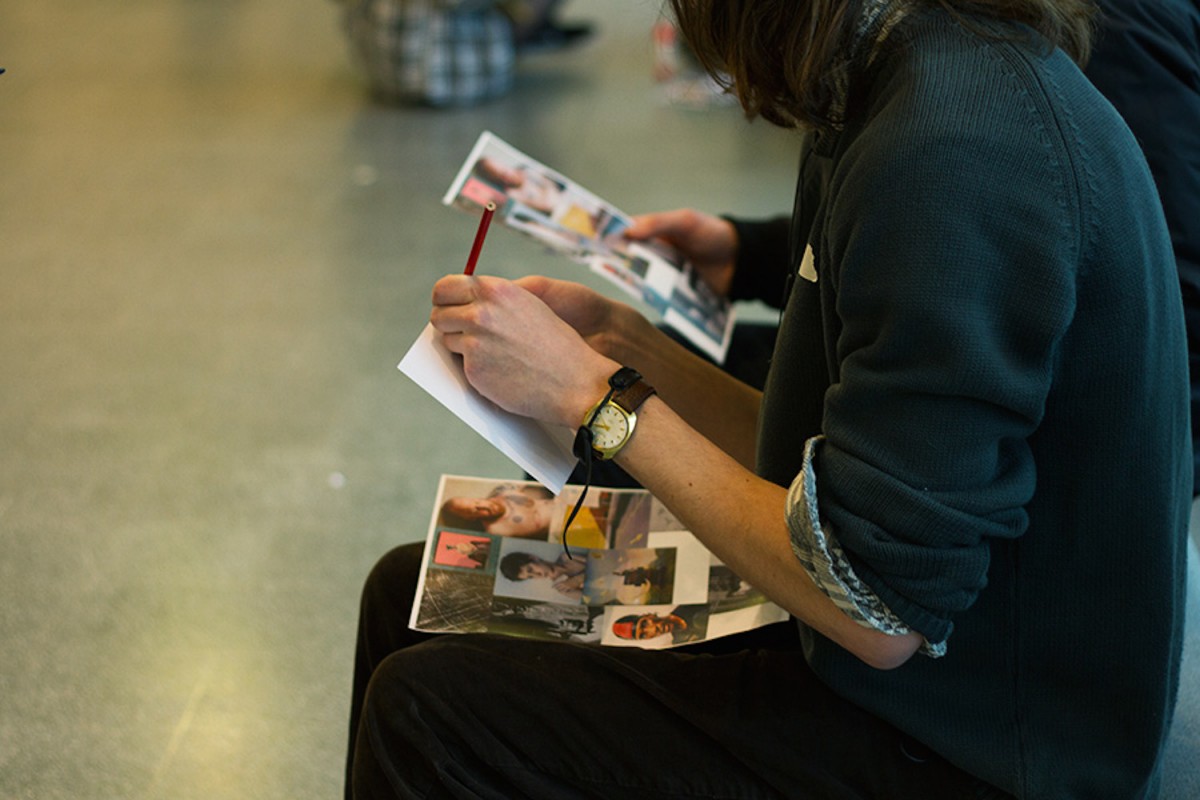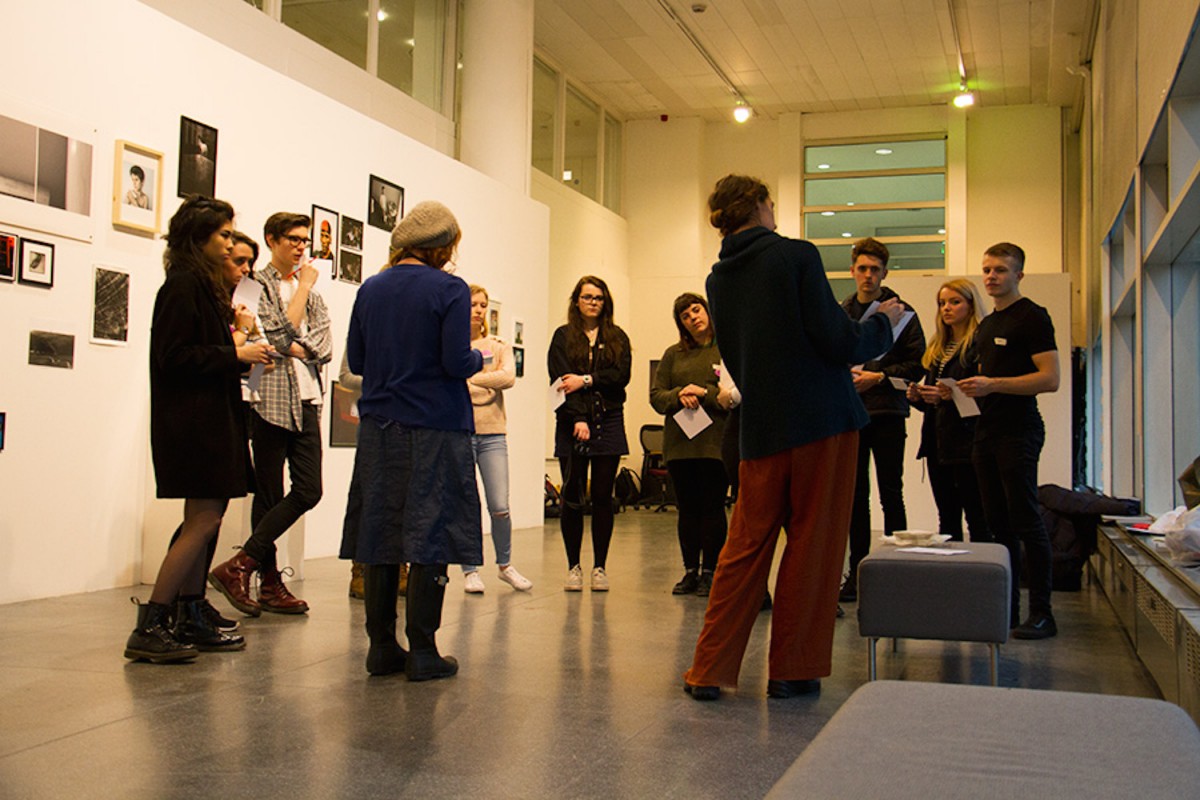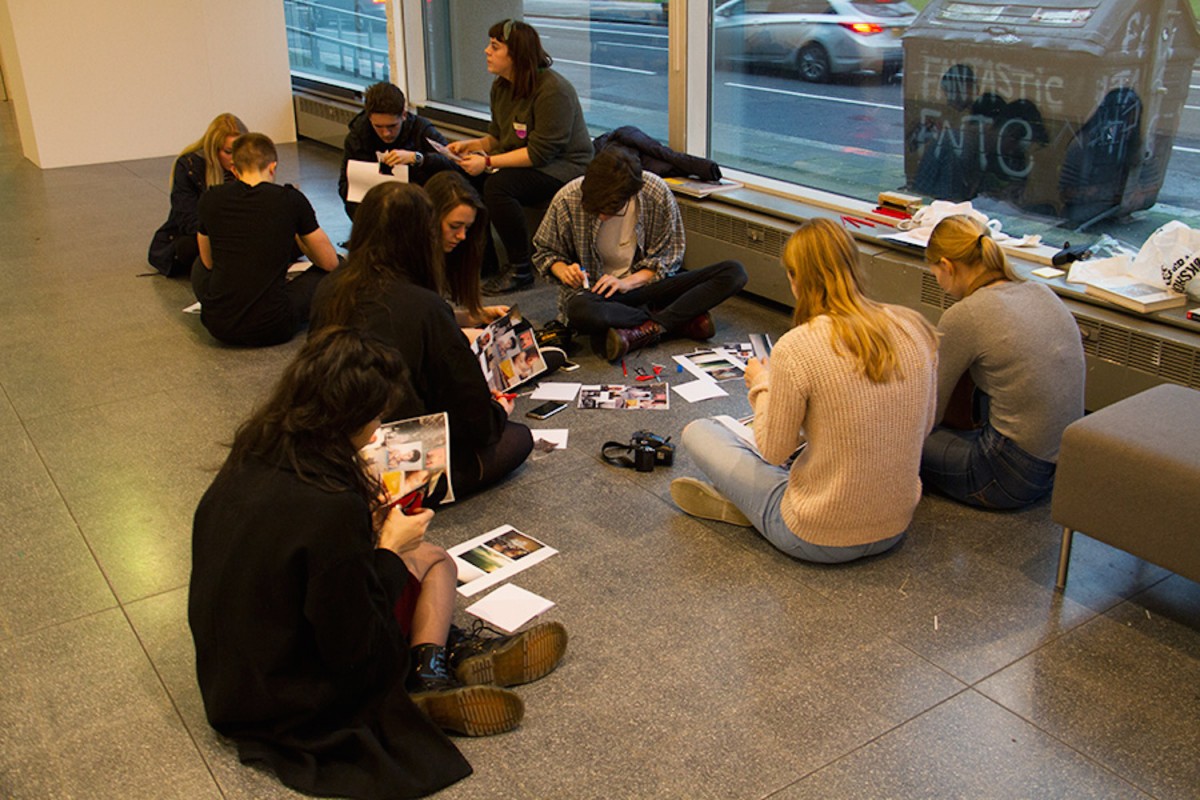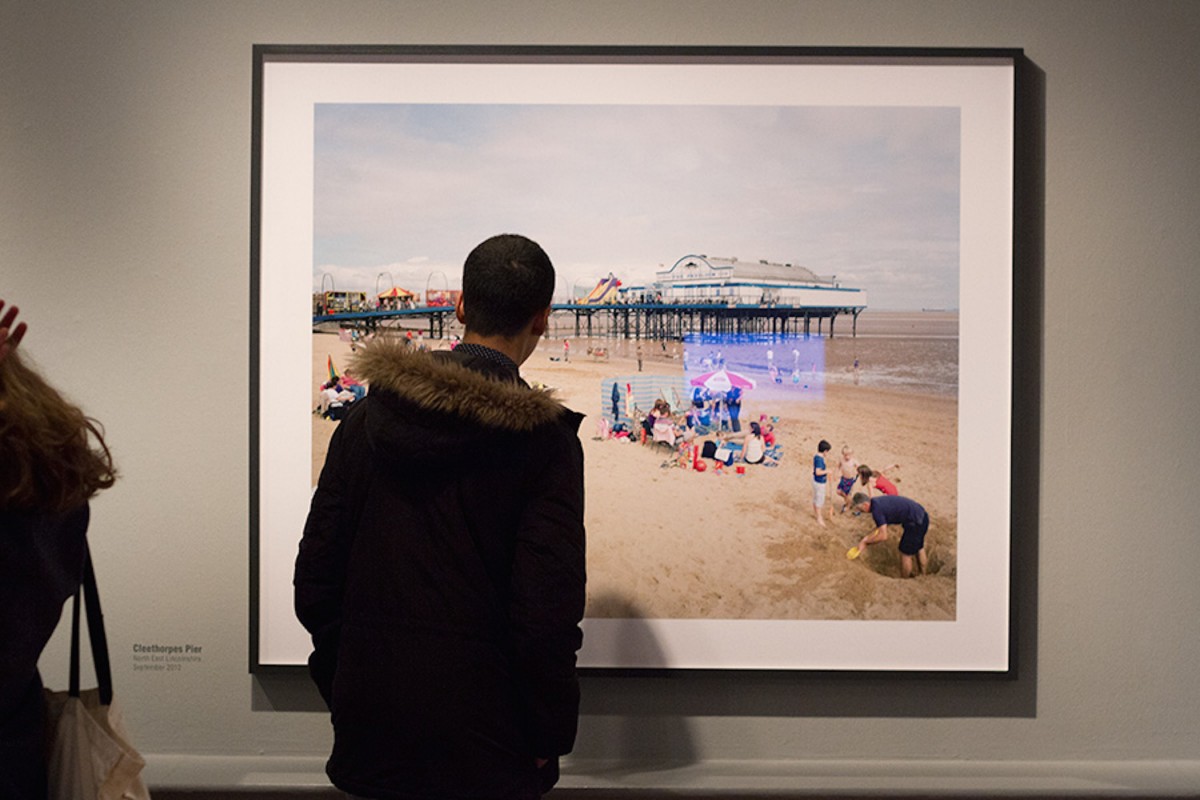Former Photoworks volunteer, Jessica Gatfield, shares her experiences of working on the recent Making it Happen Conference.
As 2015 drew to a close and 2016 promised many new beginnings, five volunteers and I found ourselves embarking on a new project: Making It Happen. Run by the Learning and Participation Team at Photoworks and with the assistance of Annis Joslin, an artist and educator, the project enabled volunteers to plan and deliver photography-based workshops to students of the ages 16 to 18. Working alongside an experienced facilitator, we used the four training sessions to learn the basics of delivering workshops, develop individual approaches and utilise the time to plan the tasks that we would ultimately deliver on the one-day event.
The first training session was a chance to get to know our fellow volunteers as well as our facilitator Annis. In turn, we openly discussed our interest in taking part in the project, sharing any relevant experience or common interests amongst the group. Many of the volunteers shared the same degree pathway in photography and others were following a wider art degree with an interest in teaching. Annis introduced us to a variety of icebreaker tasks, both practical and visual, that enabled pair work and interaction within the group. Thereafter, we began to devise our own tasks for other pairs, focusing on a variety of learning styles and developing our time management skills.

Our second meeting was located at the Simon Roberts Pierdom exhibition at Brighton Museum. Here, we learnt more about gallery-based workshops, completing tasks that interacted with the photographic series and further devising our own tasks that encouraged planning for our role as facilitators.
In week three we found ourselves immersed within a BA (Hons) Photography exhibition showcasing a selection of second year students’ work in the Grand Parade Gallery. The show, entitled Capital, was going to be another venue for the final project and therefore key to get to know the space. Here we began by testing out ideas and possible tasks that may be used in our workshops providing feedback amongst volunteers and gaining useful advice from Annis. Moreover, we began to create rough drafts of our workshops, utilising a ‘workshop plan’ document that enabled us to identify our aims, set of activities, resources needed and evaluative strategies.

As the final week drew near, we, as volunteers, were set the task of planning our workshops. With our abilities challenged and rough drafts to hand, we had to construct a range of activities sequentially, apply time management skills, identify necessary resources and leave space for improvisation on the day. Whether in pairs or delivering individually, the feedback in the final training session was the key to our workshops becoming a success. It not only served as a platform for making changes but as a chance to hear everybody’s proposals and offer opinions.
With our workshop plans refined and feedback taken on-board, the Making It Happen day had arrived. The morning began with Simon Roberts giving an engaging talk on being a photographer, showcasing work from his early career to the present day.
Shortly after, Helen Cammock, a visual artist who works in a variety of art mediums, spoke about her early career and offered the students advice. Cammock highly recommended volunteering, not only for its rewarding prospects but also for the many hidden opportunities that it may hold.
After a short break, the final preparation in our designated venues took place. As a facilitator delivering my workshop alone, I was placed within the Pierdom exhibition at Brighton Museum. Nervous and excited, the workshops began one by one, each offering a challenge along the way. The initial hurdle to overcome was adapting tasks to suit differing group sizes. This required improvisation on many activities and utilising a range of back up tasks if sessions did not last as long as anticipated. As group sizes differed from one workshop to the next, another obstacle was to segregate friends and pair up students from different colleges. This promoted a more engaging response to each activity and created a clear focus. Furthermore, keeping students engaged when they had completed a task was difficult. I soon learnt to think on my feet to create other activities to keep the students occupied and to gather the group together for feedback as often as possible.

With that said, most of the students were attentive, enthusiastic and eager to participate. Having a variety of activities to keep them stimulated worked to my advantage and the overall feedback was very positive. One student highlighted that the “workshop was interesting and helped to improve his knowledge of photography” whilst another said that “it was very interactive but would love to have learnt more about the artist and his images.” Therefore, for workshops that I may facilitate in the future, I am sure to take on board their comments and utilise the new skills I acquired throughout this experience.
With this experience standing as another to add to my list of volunteering within the arts, I am no stranger to having worked with Photoworks. Having previously volunteered for a number of months with the team in my last year of studying at the University of Brighton, I have since continued along the pathway of assisting and facilitating workshops within local communities. I began my volunteering working in the Photoworks office, assisting on the day-to-day running of the organisation. Before long, my aims and interests were met with many opportunities to assist photographers and art facilitators on projects and programs within Brighton and Hove. The opportunities led to work with the PACA and BACA academies on the Art at Work program, working with the elderly on A View From The Past Brighton Photo Biennial project and working with the homeless community assisting a photography workshop with St Mungo’s Charity. With experience gained and my confidence boosted, I went on to teach Art and Photography in a rural town in Tanzania, Africa for the duration of two months at the end of 2014. Without the volunteering prospects that Photoworks offered, I would not have felt so at ease dealing with the challenges and rewards that any facilitator can face when delivering a workshop, let alone in a classroom with a language barrier 4000 miles away. Nearly 18 months on, Photoworks continue to support my interest in working within the community Arts and keep in regular contact offering advice and upcoming volunteering opportunities that I can become a part of.
For an article from another of our volunteer’s on learning from the volunteering experience, click here.
